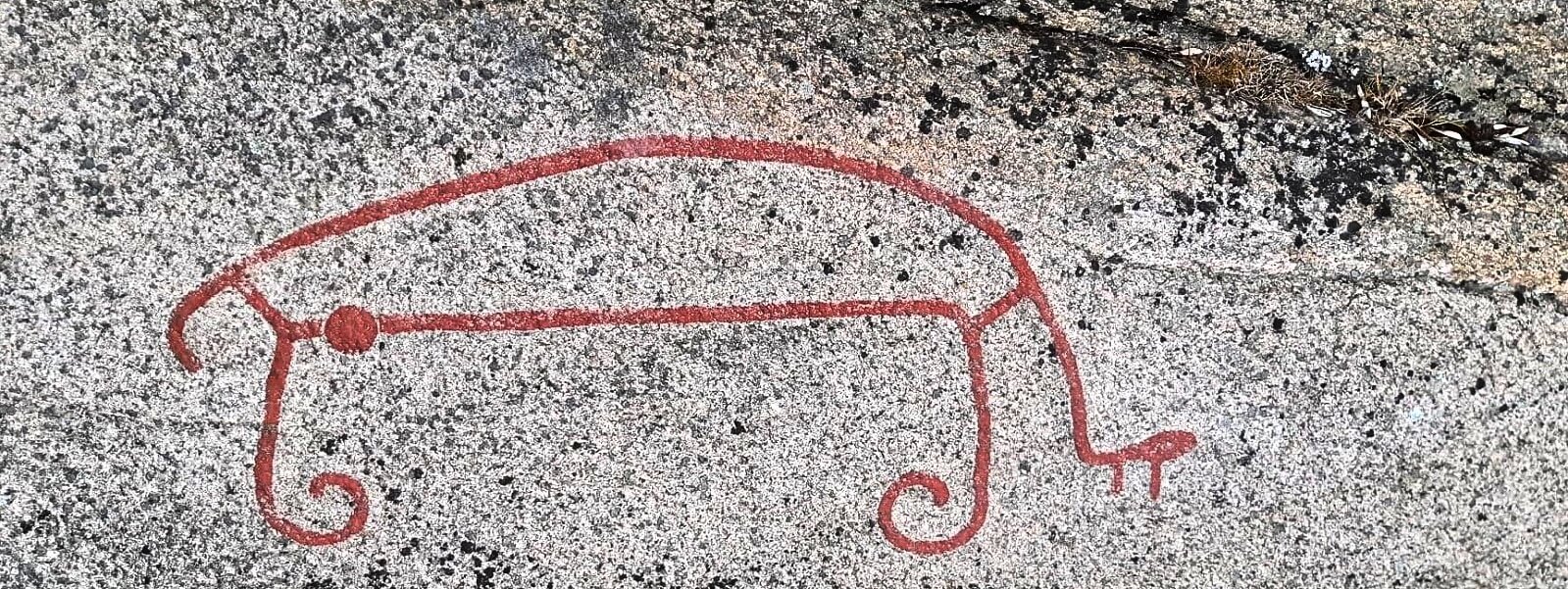

Denmark's largest concentration of rock carvings is located just north of Allinge in the northern part of Bornholm. The carvings are from the later time of the Bronze Age, or in other words, over 2,500 years old. They were not performed at the same time, probably the difference between the oldest and youngest rites is 400 years.
Although the name "engraving" suggests that they were carved on rocks, they were probably most often made by "carving" patterns with stone. The excavations below the rocks prove that human activity at this site was not limited to rock carvings. Cavities with fire-damaged stones and traces of stone pavement were found near the rocks.

Archaeologists believe that Madsebakke served as a holy place for the local population. Rock carvings probably arose as part of more extensive rituals. We can only guess what these rituals consisted of. These could be, for example, making sacrifices, cult meals, music, dancing and summoning ghosts.
In Madsebakke, you can see most of the motifs found on rock carvings known from Bornholm, such as: depictions of a ship, a cross drawn in a circle - the so-called "Solar cross", foot marks. Their symbolism has not yet been thoroughly researched.

Even well-preserved rock carvings can be difficult to see in daylight. For this reason, carvings in the most visited places are marked with a special red paint with preservative properties. Thus, these are not "rock drawings" as many believe, but painted existing patterns "carved" on the rocks.
Granite is not as indestructible as it looks. Weather conditions and low-growing vegetation slowly destroy its surface. Although rock weathering is a natural process, it has been significantly accelerated in recent years due to air pollution.

Visitors also contribute to the destruction of rock carvings.
This can be avoided if a few simple rules are followed:
- Do not walk on rock carvings
- Do not draw on rocks
- Do not leave rubbish
- Remember that rock carvings are one of the monuments to Danish history!
Information from the Bornholms Museum (website http://bornholmsmuseum.dk/sekundaer-menu/forside.aspx)